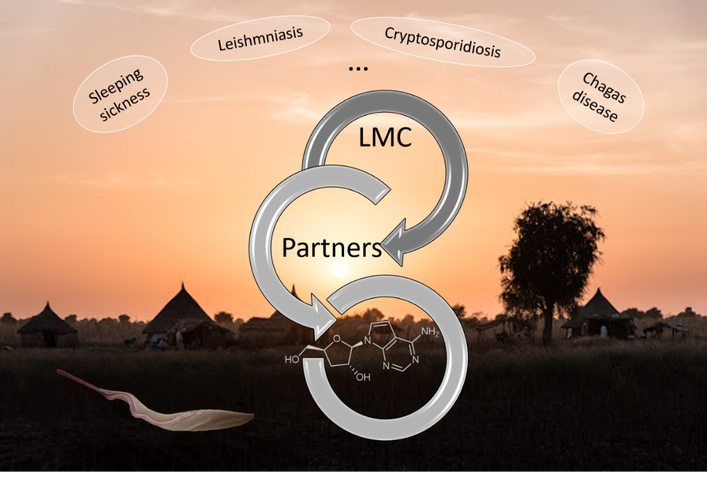New leads for infectious protozoan diseases
Infectious tropical diseases (ITDs) that disproportionally affect the world’s poorest people have traditionally been neglected from research efforts toward the discovery and development of new and effective therapies. Currently available therapies for many ITDs are unsatisfactory due to their low efficacy, the rise of drug resistance, side-effects leading to treatment discontinuation, non-oral administration route, etc. In this project we therefore aim at identifying new hits for the treatment of ITDs with high unmet medical needs, caused by parasitic protozoa (human African trypanosomiasis, Chagas disease, leishmaniasis, cryptosporidiosis, malaria, …).
Virtually all parasitic protozoa are purine auxotroph, meaning that they rely exclusively on the acquisition and processing of pre-formed purines from their host(s). These organisms have acquired high-affinity uptake systems coupled to an enzymatic machinery that allows them to salvage and interconvert nucleosides and nucleotides to sustain DNA and RNA synthesis. Synthetic purine nucleoside analogues have shown to be competent substrates of transporter-mediated uptake,[1] as well as modulators of one/several purine salvage pathway enzyme(s).[2] Thus, purine nucleoside analogues represent a ‘privileged’ compound class to uncover bioactive antiprotozoal compounds.
Therefore, a few years ago we started with the synthesis of a focused purine nucleoside library (still expanding) to discover new antiprotozoal agents. This proved to be a viable strategy to discover new antiprotozoal analogues.[3],[4],[5],[6],[7]
Collaboration with University of Antwerp (Prof. Guy Caljon & Prof. Louis Maes), University of Glasgow (Prof. Harry P. de Koning) and University of Pennsylvania (Prof. Boris Striepen).
[1] de Koning, H. P.; et al. FEMS Microbiol. Rev. 2005, 29 (5), 987-1020.
[2] Berg, M.; et al. Curr. Med. Chem. 2010, 17 (23), 2456-2481.
[3] Hulpia, F.; et al. J. Med. Chem. 2018, 61 (20), 9287-9300.
[4] Hulpia, F.; et al. Eur. J. Med. Chem. 2019, 164, 689-705.
[5] Hulpia, F.; et al. Nat. Commun. 2019, 10 (1), 5564.
[6] Lin, C.; et al. J. Med. Chem. 2019, 62 (19), 8847-8865.
[7] Hulpia, F.; et al. Eur. J. Med. Chem. 2020, 188, 112018.
